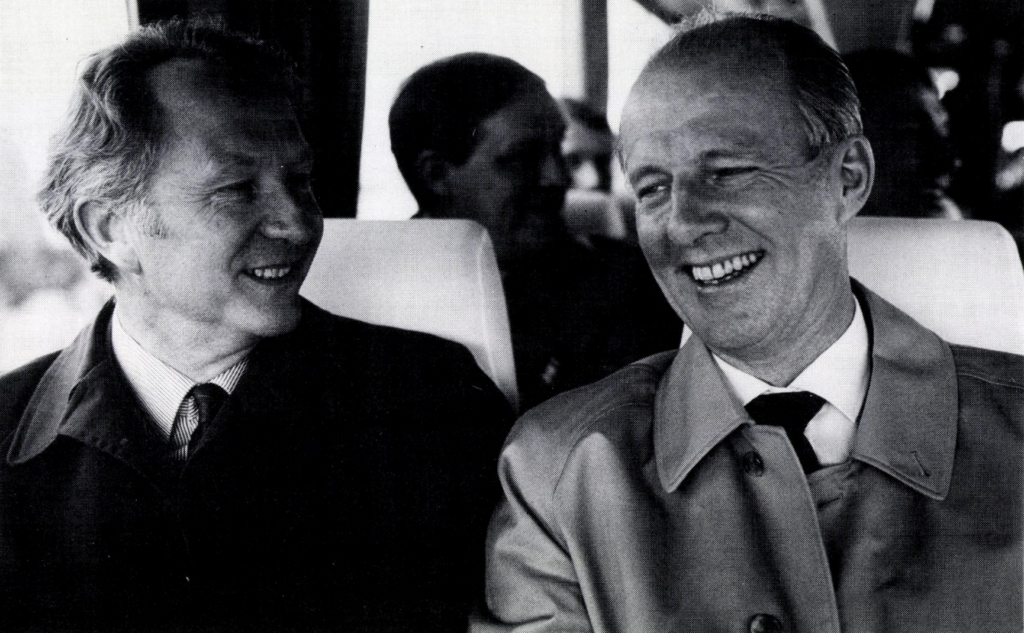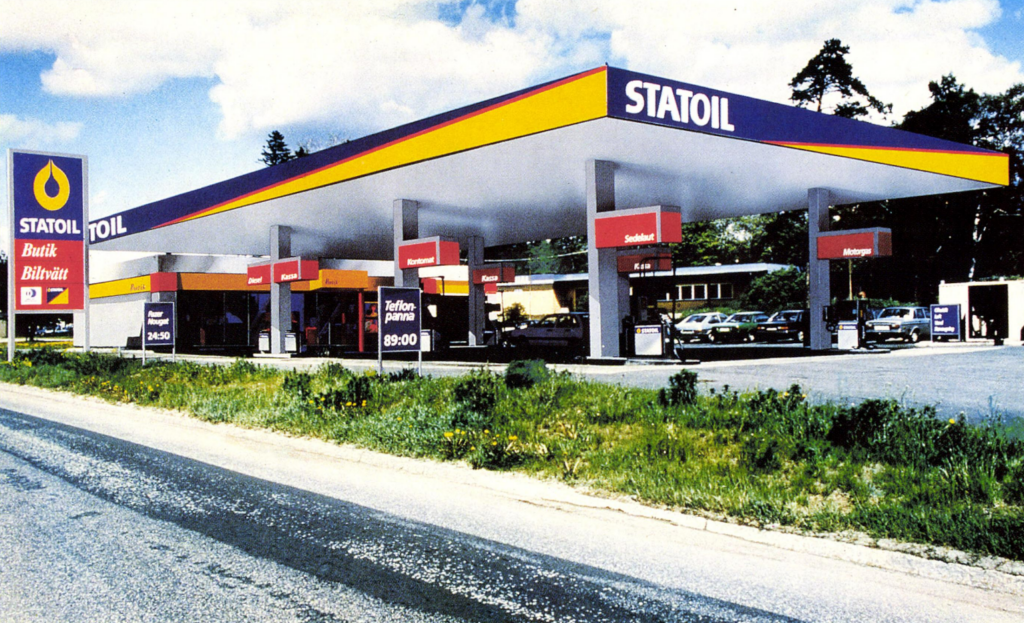Expansion in Scandinavia

As early as 1984, when the Storting (parliament) considered the refinery expansion, politicians called for an assessment of whether the state company should become involved in distribution abroad. Many wanted Statoil to make specific proposals. Less than a year later, Sweden was launched as a relevant candidate.
The Storting approved plans on 20 June 1985 for the company to acquire Esso Invest AB, a Swedish subsidiary of Exxon Corporation in the USA. It included Svenska Esso AB, a marketing arm for refined oil products, and an ethylene factory outside Stenungsund.[REMOVE]Fotnote: Proposition no 111 (1984-85) to the Storting, Om Statoils kjøp av Esso Invest AB i Sverige: 8, https://stortinget.no/no/Saker-og-publikasjoner/Stortingsforhandlinger/Lesevisning/?p=1984-85&paid=2&wid=b&psid=DIVL920.

Almost exactly a year later, on 18 June 1986, the Storting also gave Statoil the green light for a similar purchase – Exxon’s marketing business in Denmark. That included the service station network and a refinery at Kalundborg in Sjælland.[REMOVE]Fotnote: Proposition no 87 (1985-86) to the Storting, Om Statoils kjøp av Dansk Esso A/S og aksjer i Swedegas AB: 1, https://stortinget.no/no/Saker-og-publikasjoner/Stortingsforhandlinger/Lesevisning/?p=1985-86&paid=2&wid=b&psid=DIVL690.
Integration the answer
A clear perception prevailed at the time that the most profitable solution was to be an integrated oil company, which did everything from exploration to selling refined products. That would allow it to reap profits wherever market conditions were most favourable.[REMOVE]Fotnote: Proposition no 111 (1984-85), op.cit: 7; Proposition no 87 (1984-85), op.cit: 5
Furthermore, the most profitable activity was considered to be selling light oil products. No alternatives existed to diesel oil and petrol, while heavier products such as heating oil were steadily being phased out in favour of other options such as electric heaters.[REMOVE]Fotnote: Proposition no 111 (1984-85), op.cit: 3; Proposition no 87 (1984-85), op.cit: 5.
The supply of crude for refining would grow with the development of ever more Norwegian fields. Converting this oil into money in the bank naturally meant the products had to be sold. But the domestic market was saturated, so Statoil believed the answer was to distribute and retail its own output abroad.
First we take Scandinavia…
As with the acquisition of the Norwegian service stations, which were quickly rebadged as Norol, the most appropriate approach was considered to be taking over existing distribution and marketing companies. That would be easier than building up new companies in a tight market.[REMOVE]Fotnote: Proceedings of the Storting, 1 June 1984: 4295 and 4307, https://www.stortinget.no/no/Saker-og-publikasjoner/Stortingsforhandlinger/Lesevisning/?p=1983-84&paid=7&wid=a&psid=DIVL647&pgid=c_1047.
Sweden stood out. Although Svenska Esso had only nine per cent of the market, the country accounted for no less than 55 per cent of petrol consumption in Scandinavia. Denmark also offered good conditions for a commitment, with 24 per cent of regional petrol purchases. Dansk Esso had 20 per cent of that market.
In addition to opportunities for product sales, these acquisitions offered several benefits. The Swedish and Danish distribution and marketing companies were both well developed, and their forecourts were more centrally located than Norol’s. According to Statoil, they also made good profits even though further rationalisation would be possible.[REMOVE]Fotnote: Proposition no 111 (1984-85), op.cit: 13-14; Proposition no 87 (1984-85), op.cit: 3 and 19.
Statoil could also benefit from the fact that the Scandinavian market was fairly sheltered in purely geographical terms. While it had represented long transport distances to Exxon, the Norwegian company’s closeness gave it a competitive edge compared with more distant suppliers.[REMOVE]Fotnote: Proposition no 111 (1984-85), op.cit: 4; Proposition no 87 (1984-85), op.cit: 3 and 19.

In Statoil’s view, well-developed distribution systems and short transport distances helped to make these acquisitions profitable. That was an important consideration for Norwegian politicians. It was not enough to acquire secure outlets for the country’s oil products. Statoil had to make money as well.[REMOVE]Fotnote: Recommendation no 319 (1984-85) to the Storting, Innstilling frå energi- og industrikomiteen om Statoils kjøp av Esso Invest AB i Sverige: 2 https://www.stortinget.no/no/Saker-og-publikasjoner/Stortingsforhandlinger/Lesevisning/?p=1984-85&paid=6&wid=aI&psid=DIVL2349; Proposition no 87 (1984-85), op.cit: 4.
As mentioned above, the acquisitions also included an ethylene factory in Sweden and a Danish refinery. Exxon undertook to give Statoil the necessary training, which offered a relatively young company an opportunity to expand its knowledge base.
Denmark was almost unique in north-west Europe because it had a shortage of refining capacity.[REMOVE]Fotnote: Proposition no 87 (1984-85), op.cit: 8. Statoil thereby envisaged a collaboration between its Mongstad and Kalundborg refineries.[REMOVE]Fotnote: Ibid: 7-8. Where Statoil was concerned, its move into the rest of Scandinavia represented the first stop on the road out to Europe. It hoped that access to the Danish market would also open the way to wider European exports of both crude oil and refined products.[REMOVE]Fotnote: Recommendation 237 (1985-86) to the Storting, Innstilling fra energi- og industrikomiteen om Statoil kjøp av Dansk Esso A/S og aksjer i Swedegas A.B.: 3, https://www.stortinget.no/no/Saker-og-publikasjoner/Stortingsforhandlinger/Lesevisning/?p=1985-86&paid=6&wid=aI&psid=DIVL1693. Which countries the company should enter next was more uncertain, but both it and most Storting politicians agreed that Scandinavia represented a good first step.
arrow_backEquality and diversity in EquinorWest Vanguard blowoutarrow_forward